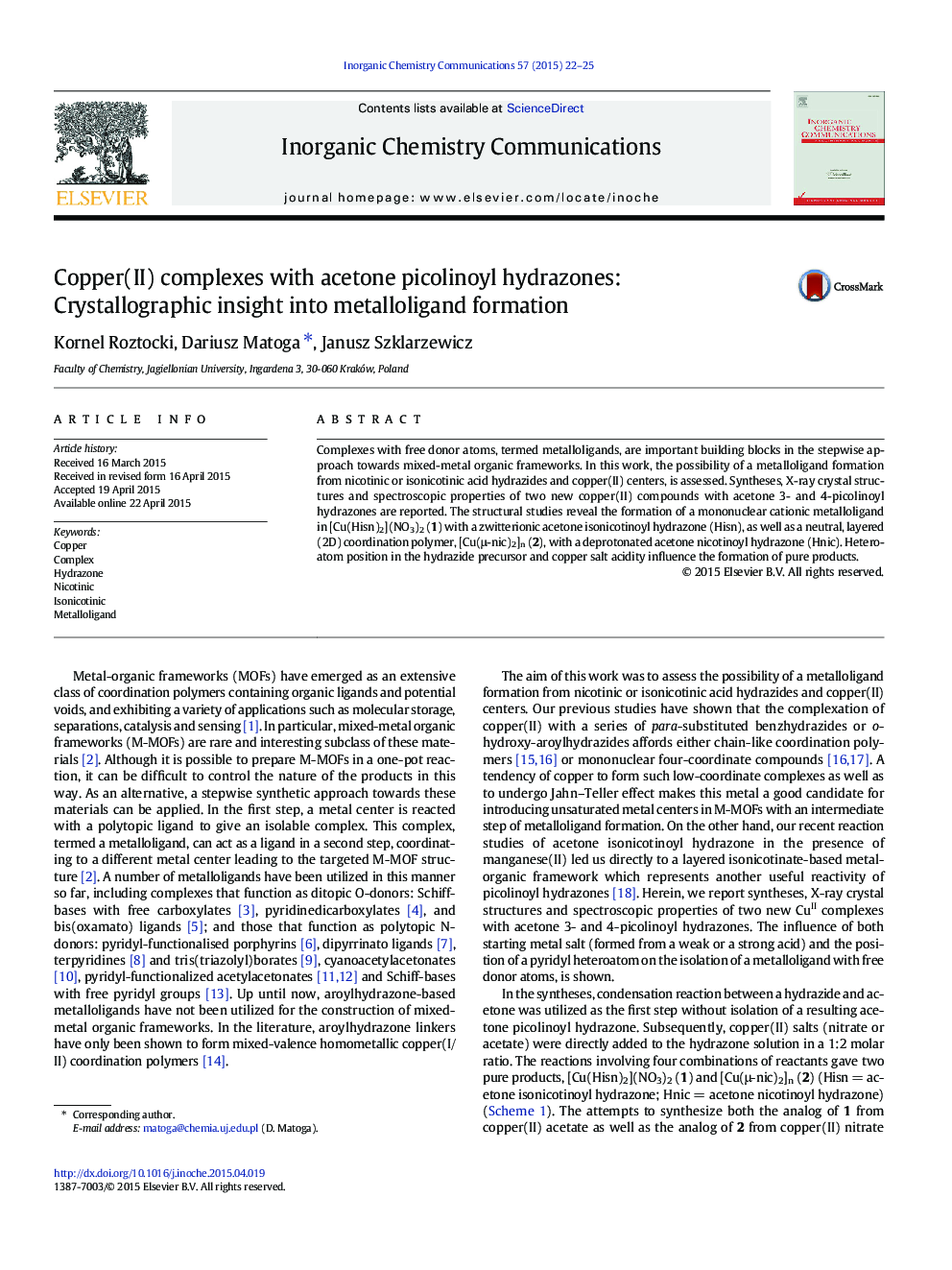| Article ID | Journal | Published Year | Pages | File Type |
|---|---|---|---|---|
| 1301469 | Inorganic Chemistry Communications | 2015 | 4 Pages |
•Metalloligand formation from CuII salts and picolinoyl hydrazones is assessed.•Nicotinic and isonicotinic acid hydrazides are ligand precursors.•Two new copper(II) complexes are isolated and characterized.•SC-XRD reveals mononuclear and extended (2D) structures of the compounds.•Copper salt acidity and the hydrazide influence the formation of pure products.
Complexes with free donor atoms, termed metalloligands, are important building blocks in the stepwise approach towards mixed-metal organic frameworks. In this work, the possibility of a metalloligand formation from nicotinic or isonicotinic acid hydrazides and copper(II) centers, is assessed. Syntheses, X-ray crystal structures and spectroscopic properties of two new copper(II) compounds with acetone 3- and 4-picolinoyl hydrazones are reported. The structural studies reveal the formation of a mononuclear cationic metalloligand in [Cu(Hisn)2](NO3)2 (1) with a zwitterionic acetone isonicotinoyl hydrazone (Hisn), as well as a neutral, layered (2D) coordination polymer, [Cu(μ-nic)2]n (2), with a deprotonated acetone nicotinoyl hydrazone (Hnic). Heteroatom position in the hydrazide precursor and copper salt acidity influence the formation of pure products.
Graphical abstractFigure optionsDownload full-size imageDownload as PowerPoint slide
